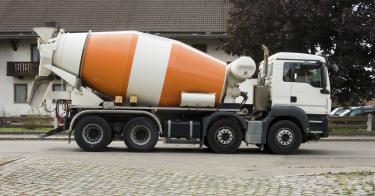Sabotage and cement trucks were the issues at hand in the Supreme Court’s June 1 decision in Glacier Northwest Inc. v. International Brotherhood of Teamsters Local Union No. 174.
In an 8-to-1 decision, the court affirmed what the law already says—that the National Labor Relations Act does not allow workers to intentionally destroy company property.
In the summer of 2017, after negotiations soured between Glacier Northwest—a company that supplies concrete and other building materials—and the International Brotherhood of Teamsters Local Union No. 174 called for a strike.
Specifically, the union instructed drivers to strike after Glacier began mixing large amounts of concrete, loading it into trucks, and leaving for deliveries. Once the union notified Glacier of the strike, Glacier instructed drivers to make their deliveries, but the union told the drivers to ignore Glacier’s instructions.
>>> New California Law Forces Taxpayers to Pay for Union Members’ Dues
At that point, as Justice Amy Coney Barrett’s majority opinion describes, “at least 16 drivers who had already set out for deliveries returned with fully loaded trucks. Seven parked their trucks, notified a Glacier representative, and either asked for instructions or took actions to protect their trucks. But at least nine drivers abandoned their trucks without a word to anyone.”
Because concrete hardens quickly and cannot be dumped just anywhere since it contains environmentally sensitive chemicals (all things the union officials directing truck drivers to desert the trucks know very well), these actions could have damaged or destroyed the company’s trucks.
Fortunately, Glacier took emergency measures and had nonstriking workers safely dump the concrete in bunkers, but not without the loss of its concrete. So Glacier sought to recover damages by suing the union in state court.
The initial trial court dismissed Glacier’s claim on the basis that the union and drivers’ actions fell under “protected concerted activity” in the NLRA, a federal labor law that supersedes state law when the two conflict.
The appellate court reversed the trial court’s decision, and then the Washington state Supreme Court reversed the appellate court’s decision, arguing that the Glacier’s loss was “incidental to a strike arguably protected by federal law.”
The U.S. Supreme Court saw it differently. As opposed to an incidental loss, the majority decision concluded that “the Union’s actions not only resulted in the destruction of all the concrete Glacier had prepared that day; they also posed a risk of foreseeable, aggravated, and imminent harm to Glacier’s trucks.”
“Because the Union took affirmative steps to endanger Glacier’s property rather than reasonable precautions to mitigate that risk, the NLRA does not arguably protect its conduct,” Justice Barrett wrote.
The Supreme Court remanded the case back to Washington’s state Supreme Court, telling the panel to hear the case devoid of the now-repudiated claim that the union had engaged in NLRA-protected activity.
>>> New NAEP Test Scores Are a Disaster. Blame Teachers Unions.
The sole dissenter, Justice Ketanji Brown Jackson, argued that, under precedent, the case should be heard first by the National Labor Relations Board if, given the facts of the case, it is even “arguably” protected by the NLRA.
The other eight justices did not believe that it was arguable that the union’s conduct was protected by the NLRA, but Justice Jackson did.
Justice Jackson also asserted that “workers are not indentured servants, bound to continue laboring until any planned work stoppage would be as painless as possible for their master.”
Under that rationale, unionized medical students would be allowed to walk out in the middle of surgeries and unionized firefighters could strike after initiating a controlled fire.
It’s reassuring that eight of the nine justices affirmed what the law already says—that workers’ right to strike does not include the right to intentionally destroy an employer’s property. That this case made it to the Supreme Court, however, shows how far unions are going to try to put themselves above the law.
This piece originally appeared in The Washington Times




